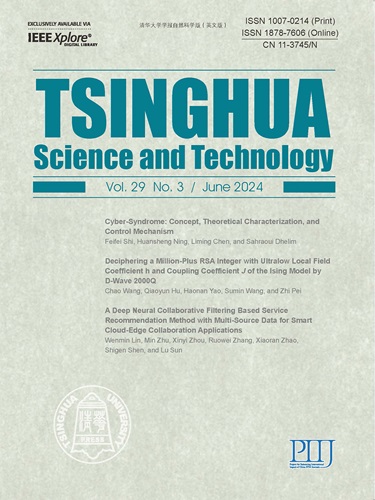Inductive Relation Prediction by Disentangled Subgraph Structure
IF 6.6
1区 计算机科学
Q1 Multidisciplinary
引用次数: 0
Abstract
Currently, most existing inductive relation prediction approaches are based on subgraph structures, with subgraph features extracted using graph neural networks to predict relations. However, subgraphs may contain disconnected regions, which usually represent different semantic ranges. Because not all semantic information about the regions is helpful in relation prediction, we propose a relation prediction model based on a disentangled subgraph structure and implement a feature updating approach based on relevant semantic aggregation. To indirectly achieve the disentangled subgraph structure from a semantic perspective, the mapping of entity features into different semantic spaces and the aggregation of related semantics on each semantic space are updated. The disentangled model can focus on features having higher semantic relevance in the prediction, thus addressing a problem with existing approaches, which ignore the semantic differences in different subgraph structures. Furthermore, using a gated recurrent neural network, this model enhances the features of entities by sorting them by distance and extracting the path information in the subgraphs. Experimentally, it is shown that when there are numerous disconnected regions in the subgraph, our model outperforms existing mainstream models in terms of both Area Under the Curve-Precision-Recall (AUC-PR) and Hits@10. Experiments prove that semantic differences in the knowledge graph can be effectively distinguished and verify the effectiveness of this method.通过分解子图结构进行归纳关系预测
目前,大多数现有的归纳式关系预测方法都是基于子图结构,利用图神经网络提取子图特征来预测关系。然而,子图可能包含互不相连的区域,这些区域通常代表不同的语义范围。由于并非所有区域的语义信息都有助于关系预测,因此我们提出了一种基于分离子图结构的关系预测模型,并实施了一种基于相关语义聚合的特征更新方法。为了间接地从语义角度实现分解子图结构,我们更新了实体特征到不同语义空间的映射以及每个语义空间上相关语义的聚合。经分解的模型可以在预测中重点关注语义相关性较高的特征,从而解决了现有方法忽视不同子图结构中语义差异的问题。此外,该模型利用门控递归神经网络,通过按距离排序和提取子图中的路径信息来增强实体的特征。实验表明,当子图中存在大量断开区域时,我们的模型在曲线下面积-精度-调用(AUC-PR)和点击率@10方面都优于现有的主流模型。实验证明,知识图谱中的语义差异可以被有效区分,并验证了这种方法的有效性。
本文章由计算机程序翻译,如有差异,请以英文原文为准。
求助全文
约1分钟内获得全文
求助全文
来源期刊

Tsinghua Science and Technology
COMPUTER SCIENCE, INFORMATION SYSTEMSCOMPU-COMPUTER SCIENCE, SOFTWARE ENGINEERING
CiteScore
10.20
自引率
10.60%
发文量
2340
期刊介绍:
Tsinghua Science and Technology (Tsinghua Sci Technol) started publication in 1996. It is an international academic journal sponsored by Tsinghua University and is published bimonthly. This journal aims at presenting the up-to-date scientific achievements in computer science, electronic engineering, and other IT fields. Contributions all over the world are welcome.
 求助内容:
求助内容: 应助结果提醒方式:
应助结果提醒方式:


